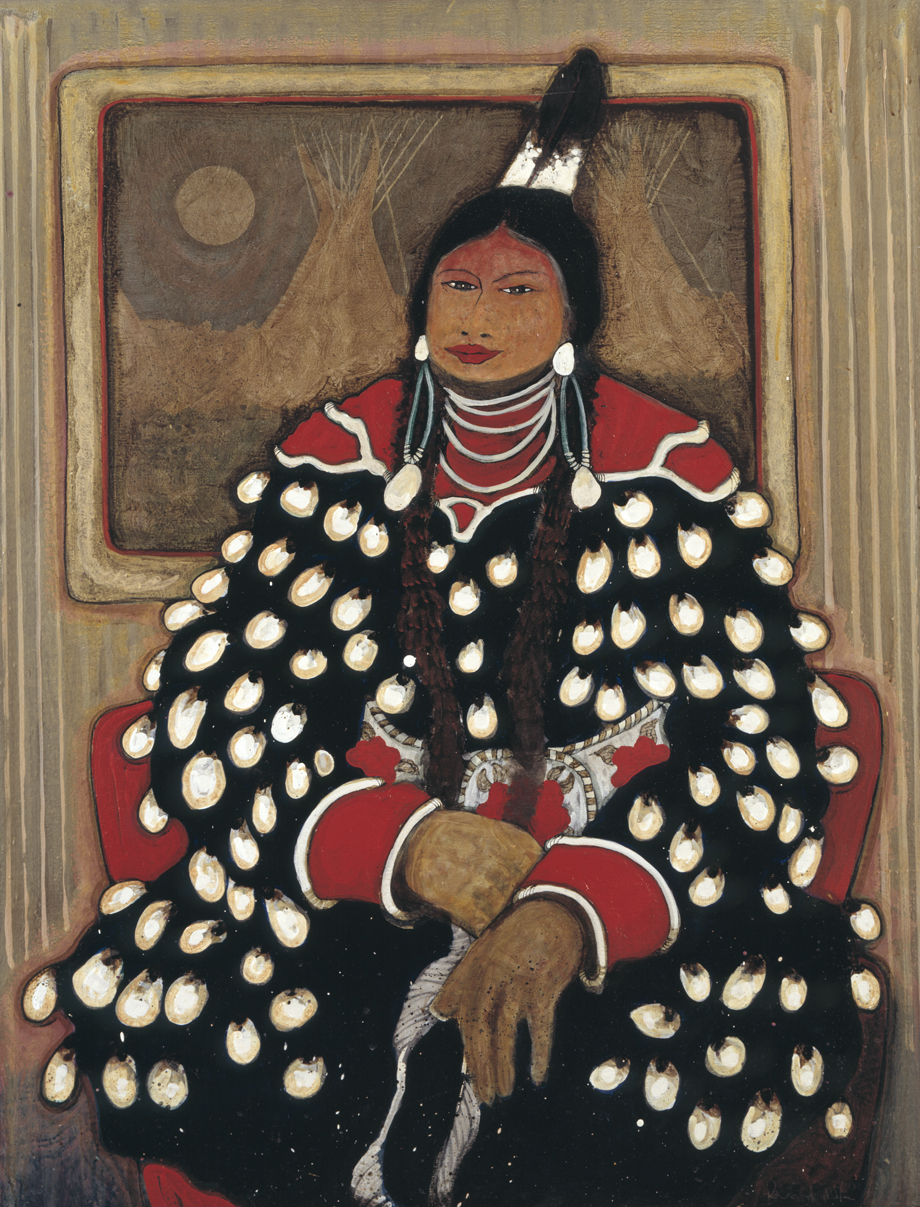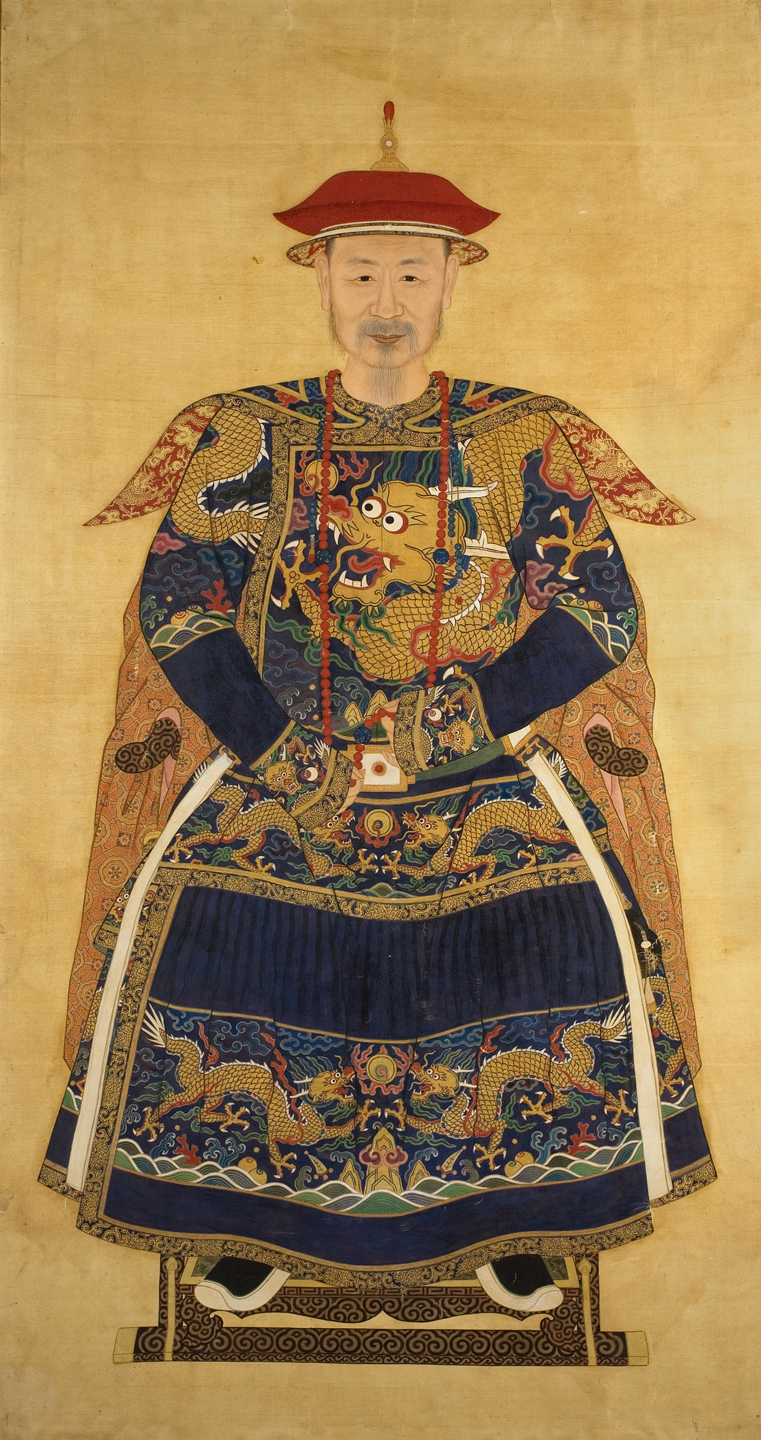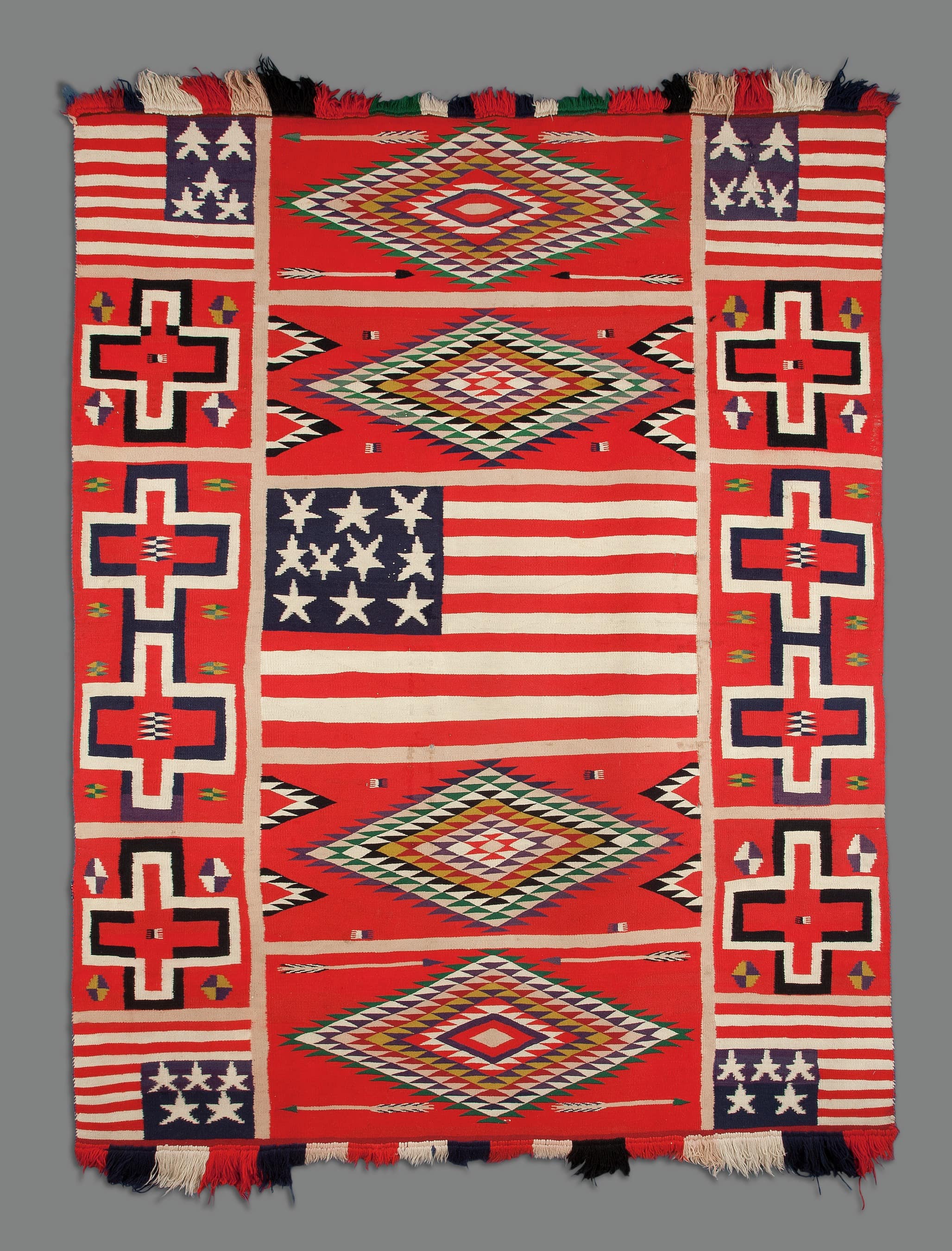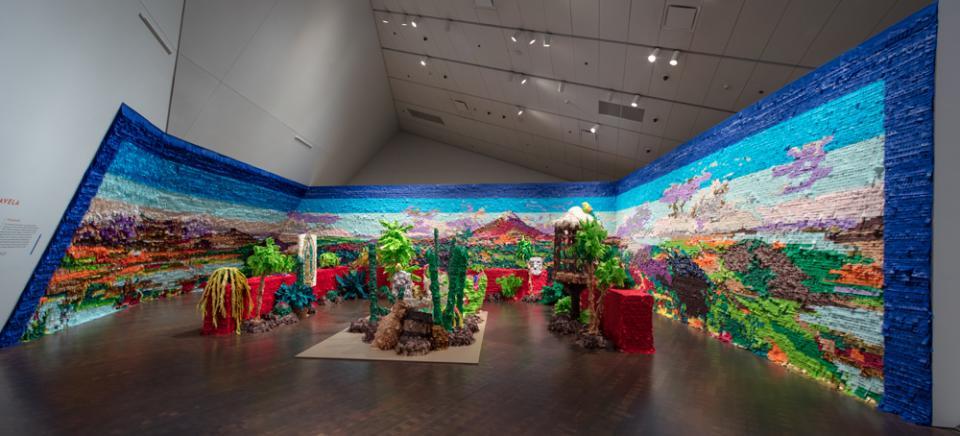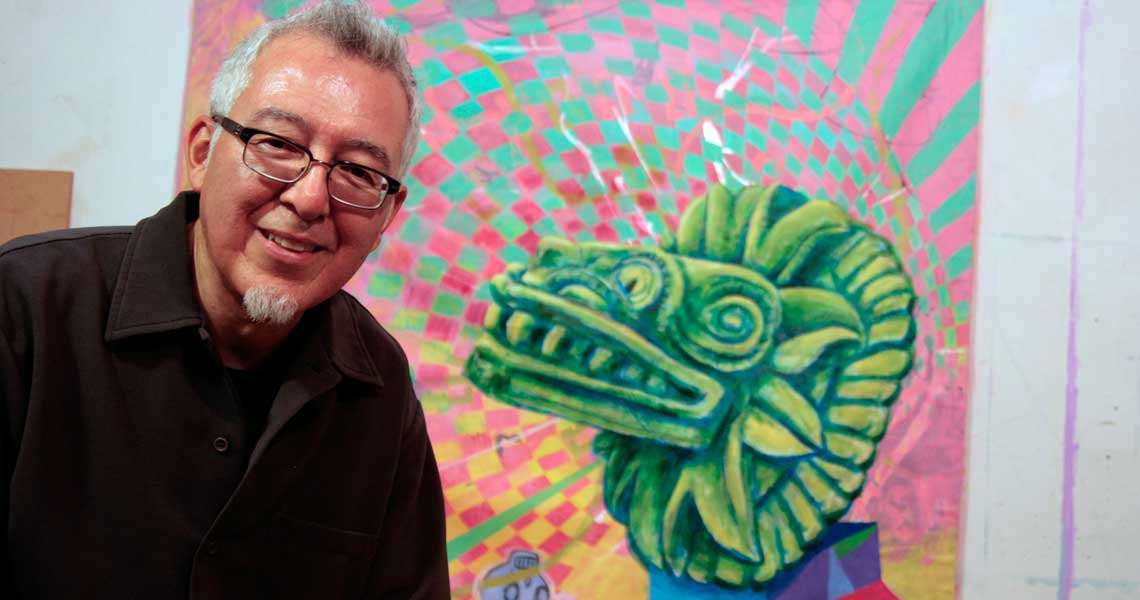This lesson focuses on the use of portraiture to provide information about a person. The comparison of the Knows Her Medicine and Edward, Prince of Wales (later King Edward VI portraits prompts students to develop a list of questions and answers. They will apply a similar process to a photo or portrait from today and to a self-portrait.
Students will be able to:
- work together to determine how the portraits tell them about the people they portray;
- respond to visual clues to gather information; and
- create a self-portrait.
Lesson
- Display or hand out Knows Her Medicine. Ask children to describe what they see. Ask children to share what the portrait is telling them about the woman. Point out details about the woman’s clothing or the scene in the background. With the children’s input, develop a list of five or more questions that can be answered with the visual information in the portrait. Examples: Can you determine where this person lived? Do you think the person is from the present or the past?
- Share the "What Inspired It?" information on Knows Her Medicine Crow Indian, found in About the Art .
- Next, display or hand out Edward, Prince of Wales (later King Edward VI. Go through the same question list as with the earlier portrait and add to it.
- Share information about the portrait of Prince Edward.
- Talk about how the two artists used portraiture to share information about the person they were painting. The visual information provides details about the person without using words.
- Display the image of someone from today. Again review the list of questions and answer them accordingly.
- Ask the class to compare all three portraits and determine if they are from the past, present or future.
- Hand out paper and colored pencils and ask children to draw a self-portrait and include details that will tell people about themselves. Encourage them to look in the mirror at their eye and hair color and other distinguishing characteristics. They may also want to include details about their clothing and place themselves in a favorite scene.
- Choose a few self-portraits and use the questions from the class list to examine the portraits.
Materials
- A portrait of someone today (an athlete, musician, or actor/actress)
- White board and markers or projection board
- Small hand-held mirrors to draw a self-portrait
- Paper and colored pencils
- About the Art sections on Knows Her Medicine and Edward, Prince of Wales (later King Edward VI
- Color copies of the paintings students to share, or the ability to project the images onto a wall or screen
Standards
- Social Studies
- History
- Geography
- Recognize change and sequence over time
- Develop spatial understanding, perspectives and connections to the world
- Visual Arts
- Invent and Discover to Create
- Observe and Learn to Comprehend
- Relate and Connect to Transfer
- Language Arts
- Oral Expression and Listening
- Collaboration
- Critical Thinking & Reasoning
- Information Literacy
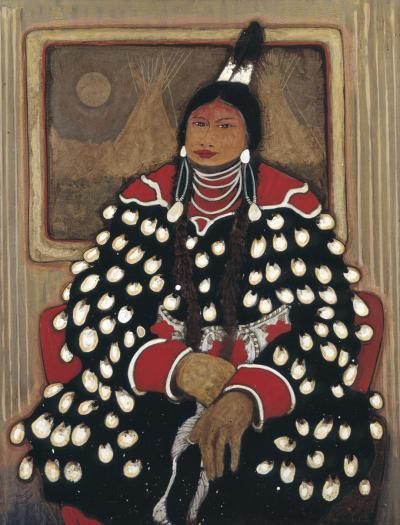
Knows Her Medicine Crow Indian
42 in. X 32 in.
William Sr. and Dorothy Harmsen Collection, H1998.11.83
Photograph © Denver Art Museum 2008. All Rights Reserved.
Kevin Red Star was born on the Crow Reservation in Lodge Grass, Montana. Born into an artistic family-his father was a musician and his mother is a skilled artist- Red Star’s creativity was nurtured throughout his childhood. Red Star grew up sketching and copying works by western artists like Frederic Remington and Charles Russell. At age 19, he was selected to study at the newly created Institute of American Indian Arts in Santa Fe, New Mexico. As one of only 150 students selected from around the country, Red Star worked closely with a faculty that included several distinguished artists, and was exposed to a wide variety of art forms. He formed a tight circle of American Indian artist friends who encouraged and challenged each other. Red Star later returned to the school as the Institute’s first artist-in-residence.
Red Star continued his studies at the San Francisco Art Institute, where he began to push the traditional boundaries of the surface of a painting. Even as his style evolved, Red Star stuck with subjects associated with the late 19th century life of his people, using images, designs, and even colors that are specifically Crow. Today his home and studio are in Red Lodge, Montana.
"I was taught the old ways, the traditional way to paint with oils, on canvas, the color wheel—that’s my training. I use the knowledge that I acquired through my schooling and my museum visits all over the world, and I take all of that into my studio and put something on the canvas. And in my case, I break a lot of rules. Rules that are standard, that you cannot deviate from. I tell students, 'you have to be knowledgeable. You have to know what you’re breaking before you break it.'" —Kevin Red Star
This is an image of a Crow woman posed in a time and location that are not entirely clear. While Red Star’s work refers to specific people from the past and present, the names, clothing, and settings of a figure may come from different sources. Red Star looks at lots of old photographs, uses names of people mentioned in historic documents, and is also inspired by living people. He attends Crow ceremonies and feasts, where he photographs people and their personal items, then uses these images in his work. He also uses Crow names to inspire his images. “I get the names off the historic tribal enrollment roles [sic]. I have ideas how a certain portrait or situation would fit them,” says Red Star. Though Red Star’s work is inspired by his native tribe, his portraits often differ from historical American Indian portraits. He describes the clothing styles of his subjects as authentic, though at times exaggerated. He paints his figures with a heavy outline, and uses paint splatters to draw attention to the surface of the painting. Red Star’s figures are often distorted in some way—in this portrait the woman’s hands are particularly large when compared with the rest of her body.
Details
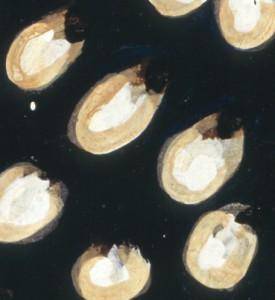
Elk Teeth Dress
The dress worn here is covered with elk teeth. Dresses like these were popular in the 19th century and are still worn today at powwows and other special occasions. They are usually made of flannel and each elk tooth is tied to the dress individually with a cord; imitation elk teeth are also used. The elk teeth add significant value and prestige to the dress. In the past, they testified to the hunting prowess of the wearer’s husband—each elk only has two of these smooth upper canine teeth (also known as eye teeth, bugler teeth, ivories, tusks, and whistlers), so it could take many years (and many elk) to collect enough teeth to cover a dress. Red Star deliberately exaggerated the size of the teeth to signify their great cultural importance. While elk teeth are used by various tribes, it is believed that their use in clothing originated among the Crow.
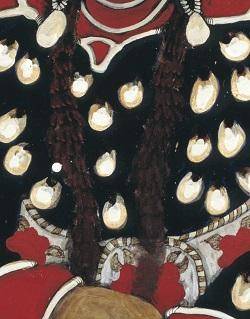
Hair Wraps
The lower part of the braids are embellished. For special occasions, hair is sometimes wrapped in strips of fur.
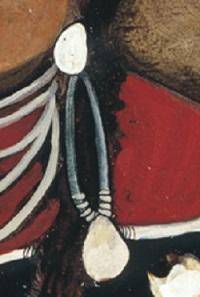
Fancy Earrings
A close look reveals that small turquoise beads are also used to ornament the wearer.
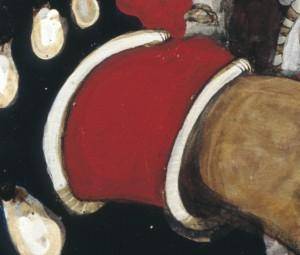
Wide Belt & Wrist Cuffs
These are also part of this style of dress. The contrasting red color of the belt and wrist cuffs is used to enhance the vibrancy of the dress. Note details like the striped trim and large red flowers on the belt.
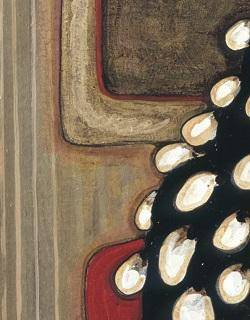
Ambiguous Background
This woman appears to be sitting right in front of a wall. She wears traditional dress, but her red chair appears modern. Is she sitting in a living room? Red Star leaves us to consider the relationship of the woman to the tipi scene—is it a painting on the wall, a television, a view through a window?
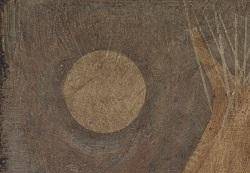
A Moon (or Sun?)
Red Star often includes a sun or a moon in his works. Both are historic Crow symbols. “Sometimes my paintings seem to float in space. I use a moon or sun to give the notion that the people are planted,” he says.

Big Hands
In this figure, the relationship between the size of the hands, head, and body is deliberately distorted and exaggerated. This, added to the way the artist has positioned the figure up close and centered, gives her a monumental presence. “I know proportions and anatomy,” he explains, “and when you know them, then you are free to distort them.”
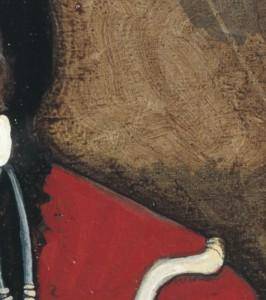
Outlining
Red Star uses several techniques to emphasize the edges of shapes. Some outline effects are painted in, some appear by leaving the area around a shape unpainted (see necklace), and there’s a looser halo effect around the figure’s head and shoulders. The outlining creates more contrast (note both dark and light outlining).
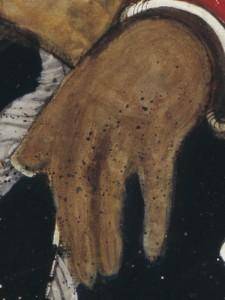
Spatter Technique
Spatters of paint draw attention to the surface of the painting.
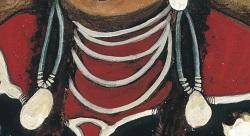
Repetition
Look at the many ways colors, shapes, and curved lines are repeated.
Funding for object education resources provided by a grant from the Morgridge Family Foundation. Additional funding provided by the William Randolph Hearst Endowment for Education Programs, and Xcel Energy Foundation. We thank our colleagues at the University of Denver Morgridge College of Education.
The images on this page are intended for classroom use only and may not be reproduced for other reasons without the permission of the Denver Art Museum. This object may not currently be on display at the museum.
